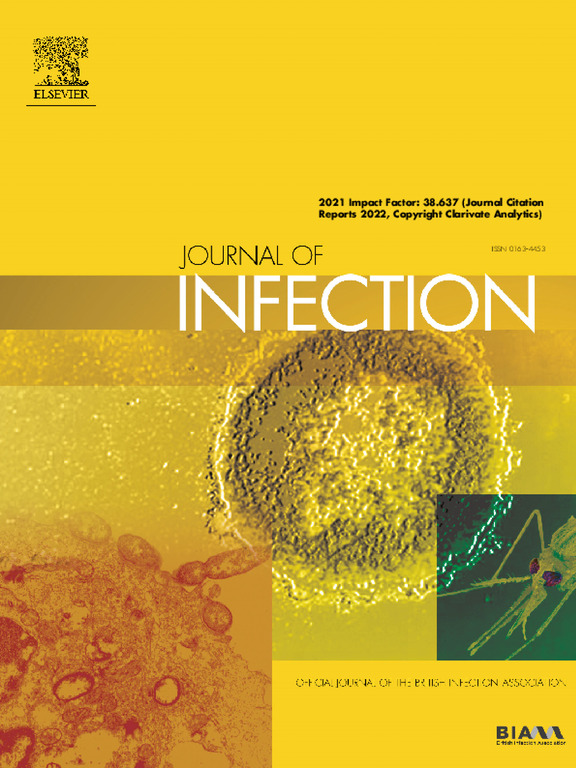Surveillance of invasive beta-haemolytic streptococci in Denmark, 2012 to 2023: A nationwide study
IF 11.9
1区 医学
Q1 INFECTIOUS DISEASES
引用次数: 0
Abstract
Objectives
To analyse trends in incidence, seasonality, and antimicrobial resistance of invasive beta-haemolytic streptococci (iBHS) in Denmark from 2012 to 2023.
Methods
Nationwide laboratory surveillance included submission of invasive isolates of Lancefield group A, B, C, and G streptococci from blood, cerebrospinal fluid, and other sterile sites to the National Reference Laboratory. Incidence rates (IRs) per 100,000 were calculated. Seasonality was analysed using Poisson regression, and antimicrobial susceptibility was determined by EUCAST disc diffusion.
Results
In total, 9470 iBHS cases were identified. Annual IRs increased from 2.6 to 9.4 for iGAS, 2.5 to 4.9 for iGBS, 1.4 to 4.8 for iGCS, and 3.1 to 8.5 for iGGS. iGAS exhibited marked seasonality, peaking in February and troughing in September (peak-to-trough ratio 3.2). Incidence declined during the COVID-19 pandemic but rebounded in 2023. No seasonality was observed for iGBS, iGCS, or iGGS. Incidences were highest in males and older adults, except iGBS, which showed a bimodal distribution. Recurrent infections occurred in 5.4% of cases, predominantly with iGGS and iGCS. All isolates were penicillin susceptible, but erythromycin and clindamycin resistance increased in iGBS and iGGS.
Conclusions
The rising incidence of iBHS, particularly iGAS resurgence and increasing resistance, highlights the need for continued surveillance.
2012 - 2023年丹麦侵袭性溶血链球菌监测:一项全国性研究
目的:分析2012年至2023年丹麦侵袭性乙型溶血性链球菌(iBHS)的发病率、季节性和耐药性趋势。方法:全国实验室监测包括将血液、脑脊液和其他无菌部位的兰斯菲尔德A、B、C和G群链球菌的侵袭性分离株提交国家参考实验室。计算每10万人的发病率(IRs)。用泊松回归分析季节性,用EUCAST纸片扩散法测定抗菌药物敏感性。结果:共发现9470例iBHS病例。iGAS的年度IRs从2.6增加到9.4,iGBS从2.5增加到4.9,iGCS从1.4增加到4.8,iGGS从3.1增加到8.5。iGAS具有明显的季节性,2月达峰,9月达谷(峰谷比3.2)。在2019冠状病毒病大流行期间,发病率有所下降,但在2023年出现反弹。iGBS、iGCS和iGGS无季节性。除iGBS呈双峰分布外,男性和老年人发病率最高。5.4%的病例发生复发性感染,主要是iGGS和iGCS。所有分离株均对青霉素敏感,但在iGBS和iGGS中对红霉素和克林霉素的耐药性增加。结论:iBHS发病率的上升,特别是iGAS的复发和耐药性的增加,突出了持续监测的必要性。
本文章由计算机程序翻译,如有差异,请以英文原文为准。
求助全文
约1分钟内获得全文
求助全文
来源期刊

Journal of Infection
医学-传染病学
CiteScore
45.90
自引率
3.20%
发文量
475
审稿时长
16 days
期刊介绍:
The Journal of Infection publishes original papers on all aspects of infection - clinical, microbiological and epidemiological. The Journal seeks to bring together knowledge from all specialties involved in infection research and clinical practice, and present the best work in the ever-changing field of infection.
Each issue brings you Editorials that describe current or controversial topics of interest, high quality Reviews to keep you in touch with the latest developments in specific fields of interest, an Epidemiology section reporting studies in the hospital and the general community, and a lively correspondence section.
 求助内容:
求助内容: 应助结果提醒方式:
应助结果提醒方式:


